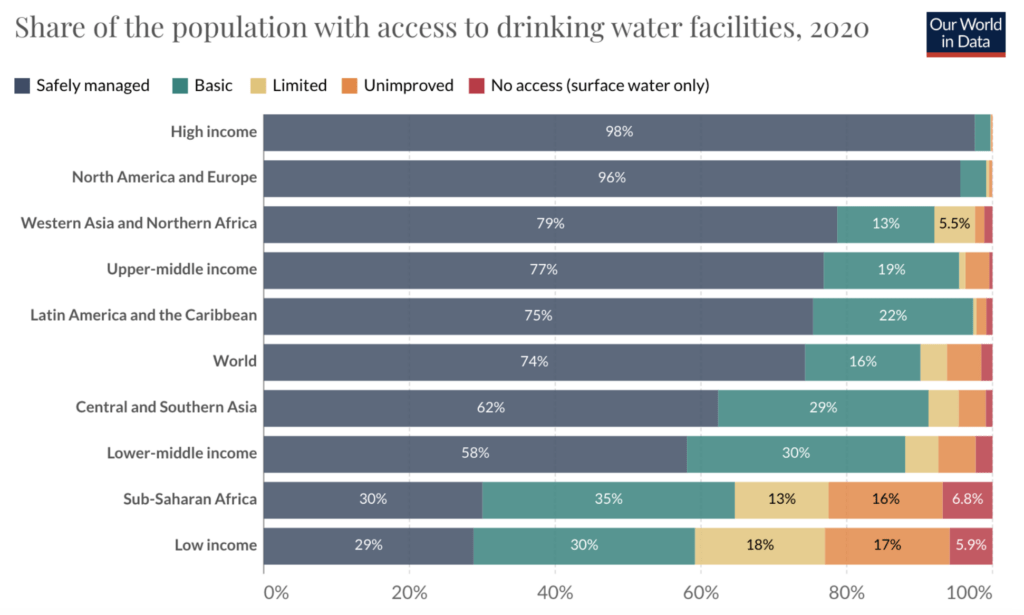0
£0.00
Mini Cart
Empty cart
No products in the cart.

Water scarcity is becoming an increasing concern for both large and smaller economies. The World Economic Forum specifically predicted that the increasing contamination of drinking water sources and the scarcity of clean water will have a significant impact on the economy, environment, and public health.
This is what the current picture looks like when looking at the share of the population with access to clean water sources.

However, the concerning part is that even “clean water” as defined nowadays, is significantly less pure than it was 50 years ago. The definition of clean water also varies slightly depending on the country and continent. It is widely known that the EU (through its Water Framework Directive) as a whole has stricter water purity guidelines compared to the US (The Clean Water Act), with the limits of contamination being much lower.
The complex mix of physical, economic, and political challenges related to water management in developed countries is set to grow as the world’s population increases.
The United States is facing a number of physical challenges related to water scarcity, including declining water tables, shrinking reservoirs, and prolonged drought conditions in certain regions.
These challenges are putting pressure on the country’s water supplies and making it more difficult to provide sufficient water to support the needs of both the population and the economy.
In addition to the physical challenges, the United States is also facing economic challenges related to water scarcity. For example, the increased demand for water from the growing population and expanding economy is putting pressure on the country’s water resources and infrastructure.
At the same time, the cost of maintaining and upgrading the infrastructure is also increasing, making it more difficult for the government and the private sector to provide the necessary investment.
The political challenges related to water scarcity in the United States are equally significant. For example, the allocation of water resources is often a contentious issue, with different interest groups vying for access to limited water supplies. This can lead to conflict and make it more difficult to reach a consensus on how to address the issue of water scarcity in the country.
The United Nations released its World Water Development Report on World Water Day 2022, and this focuses on water scarcity, security, and water management in the United States. The report finds that water scarcity is a growing problem in the United States and highlights the need to take urgent action. It recommends increasing public investment in water infrastructure, expanding access to safe drinking water, improving agricultural efficiency and irrigation methods, and strengthening governance mechanisms for managing water resources.
The report also emphasizes the importance of collaboration between governments, communities, businesses, and others to ensure effective and sustainable water management. The report stresses the need for better data collection, monitoring, and evaluation of water resources, as well as the importance of educating people on the value of water and how to conserve it.
Ultimately, water security is everyone’s responsibility and we truly believe that clean water is on track to becoming an expensive commodity. So do your part and reduce your clean water wastage.